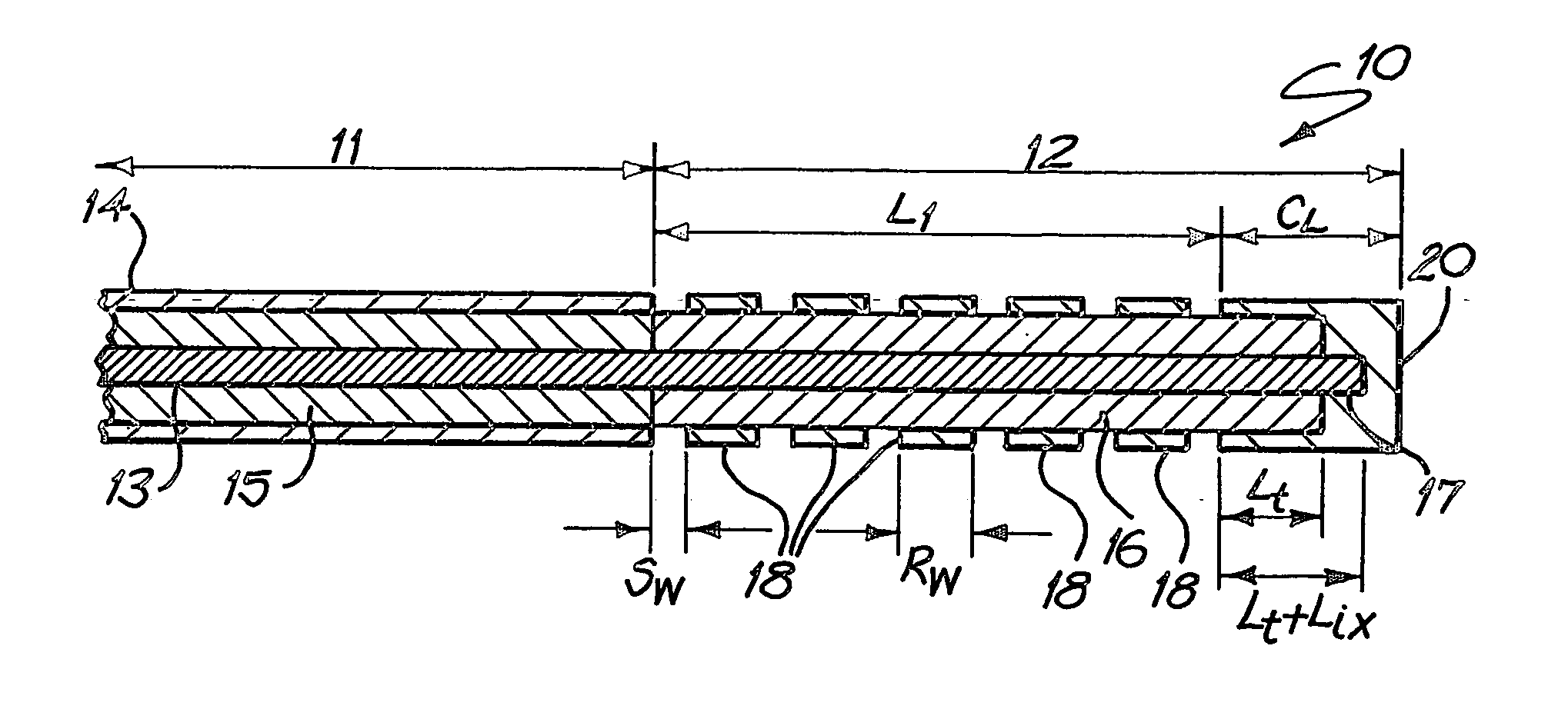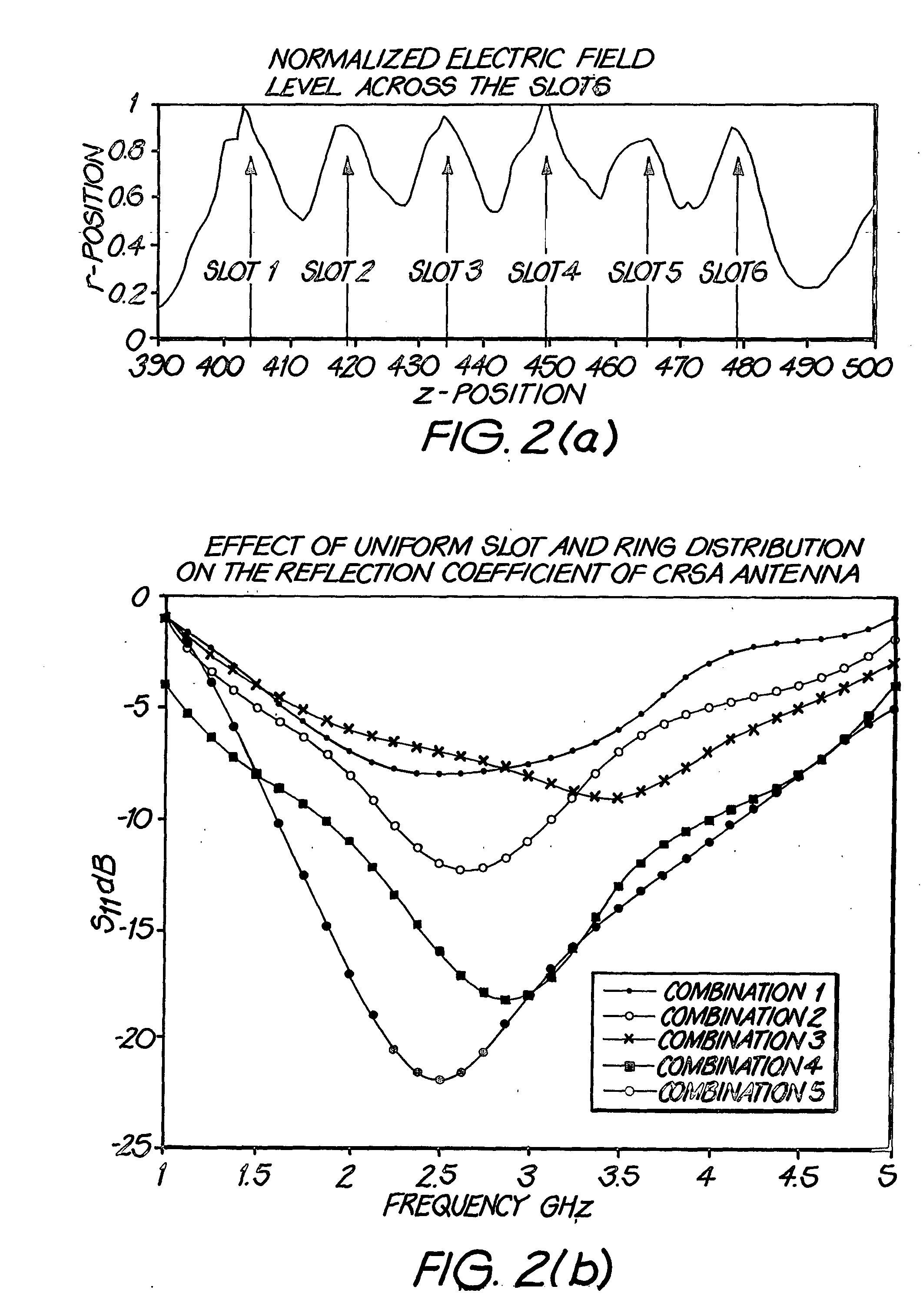Microwave antenna for medical ablation
- Summary
- Abstract
- Description
- Claims
- Application Information
AI Technical Summary
Benefits of technology
Problems solved by technology
Method used
Image
Examples
Embodiment Construction
The Coaxial Ring Slot Array (CRSA) Antenna
[0079]FIG. 1 shows the configuration of the coaxial ring slot array (CRSA) antenna 10 for cardiac ablation. The antenna 10 has a coaxial cable transmission line 11 and an antenna element 12 formed at the distal end of the transmission line 11. The coaxial cable comprises an inner conductor 13, an outer conductor 14 and a Teflon dielectric insulator 15 which provides insulation between the inner 13 and the outer 14 conductors. The insulator 15 has a diameter of about 3 mm, and the conductors about 0.91 mm.
[0080] the antenna element 12 is constructed out of the distal end of the transmission line by first removing the outer conductor 14 of the coaxial cable for the length L1+l+Lix, exposing a sheath 16 of insulator 15. At the distal end of the antenna element 12 a short length Lis of the Teflon insulation sheath 16 is removed exposing an equally short length 17 of the inner conductor 13. Copper rings 18 are made from copper tubes with a dia...
PUM
 Login to View More
Login to View More Abstract
Description
Claims
Application Information
 Login to View More
Login to View More - R&D
- Intellectual Property
- Life Sciences
- Materials
- Tech Scout
- Unparalleled Data Quality
- Higher Quality Content
- 60% Fewer Hallucinations
Browse by: Latest US Patents, China's latest patents, Technical Efficacy Thesaurus, Application Domain, Technology Topic, Popular Technical Reports.
© 2025 PatSnap. All rights reserved.Legal|Privacy policy|Modern Slavery Act Transparency Statement|Sitemap|About US| Contact US: help@patsnap.com



